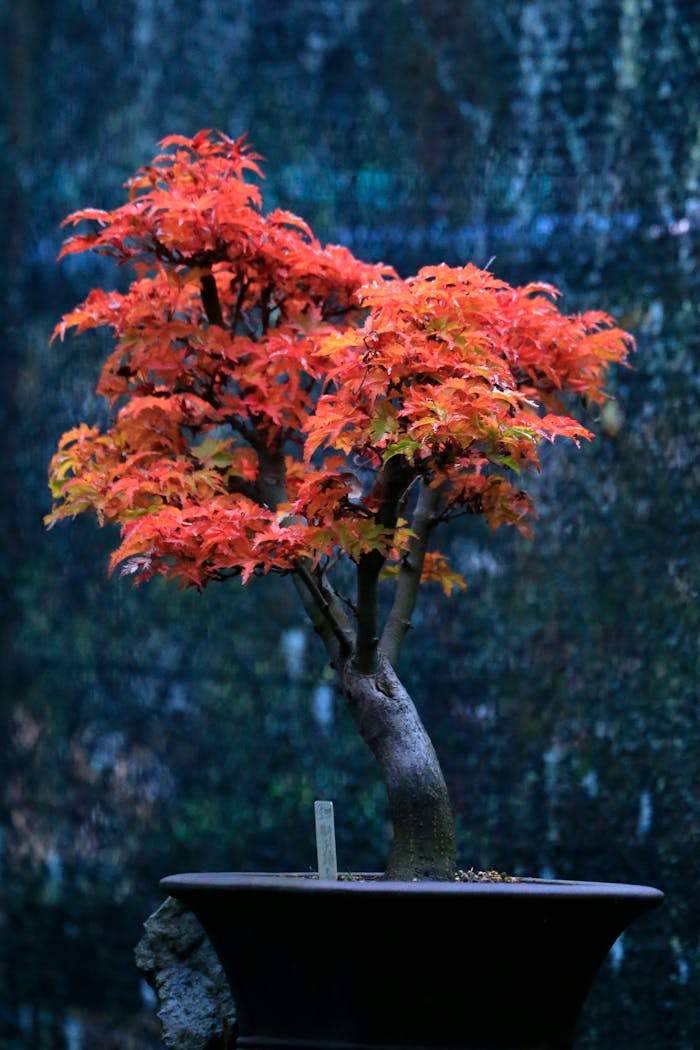|
IN BRIEF
|
In the pursuit of a lush and thriving garden, efficient watering is essential. Imagine a system that not only conserves precious water but also nurtures your plants with precision – this is the magic of drip irrigation. By transforming your watering routine, you can ensure that each drop counts, allowing plants to absorb up to 90% of applied moisture, unlike conventional methods. Navigating the installation process can seem daunting, but with a step-by-step approach tailored to your garden’s unique needs, you’ll be well on your way to creating a flourishing outdoor oasis. Dive into the intricacies of planning, components, and installation techniques that promise to revolutionize your gardening experience.
Understanding Drip Irrigation and Its Benefits
Drip irrigation is an efficient method to water your garden that minimizes water wastage while maximizing plant health. This system delivers water directly to the roots of plants, ensuring they receive the moisture they need without excess runoff. The benefits extend beyond conservation, including less time spent on maintenance, healthier plants due to reduced weed growth, and a decrease in waterborne diseases.
Essential Components of a Drip Irrigation System
Before embarking on the installation journey, it’s crucial to familiarize yourself with the key components required for a functional drip irrigation system. A typical setup will include:
- Main tubing: This is the backbone of your system, carrying water from the source to the plants.
- Emitters: These small devices release water directly to the soil around plants, typically adjustable for different flow rates.
- Connectors: These serve to join sections of tubing or attach emitters.
- Filters: Installed to prevent debris from clogging emitters.
- Pressure regulator: This component maintains the appropriate pressure for the system.
- Backflow preventer: Protects the water supply from contamination.
Planning Your Drip Irrigation System
Successful installation begins with a thorough planning phase. Mapping out your garden layout and plant types helps determine the best approach for watering.
Assessing Your Garden Layout
Take a close look at your garden’s design. Consider factors such as:
- The type of plants you have and their individual water requirements.
- Shaded areas versus those exposed to full sun.
- Soil type, as different soils retain moisture differently.
By assessing these elements, you can tailor your drip irrigation system to meet the unique needs of your garden.
Selecting the Right Components
Armed with your garden plan, you can select the appropriate components for your drip irrigation system. Consider the following:
- The diameter of the main tubing, which should align with the size of your garden.
- The flow rate of emitters, which should correspond to the needs of the plants in each zone.
- Using a filter to keep your system clog-free is essential, so choose one that’s compatible with your water source.
Step-by-Step Installation Process
Now that you have your components and a plan, it’s time to put it all together. Follow these steps to effectively install your drip irrigation system.
Setting Up the Main Line
The installation begins with laying out the main line. This is usually done by:
- Connecting the main tubing to your water source using a backflow preventer.
- Laying the tubing along the rows of plants or throughout the garden, ensuring it reaches all areas needing water.
Ensure there are no kinks or sharp bends, as these can impede water flow.
Installing Emitters
Next, it’s time to add the emitters. Depending on your plants’ needs, take the following actions:
- Use a drip irrigation hole punch tool to make holes at designated intervals in the main tubing.
- Insert the emitters into those holes, ensuring they are secure and won’t pop out.
For plants requiring more water, place emitters closer together; for those needing less, space them further apart.
Creating Branch Lines
Using connectors, you can create branch lines that extend from the main line to reach areas of your garden that may require additional watering. It’s advisable to use tees to branch off the main line. Make clean cuts in the tubing, and use connectors to ensure tight seals.
Connecting the System
Once the emitters and branch lines are in place, connect all parts of the system:
- Attach the filter and pressure regulator at the water source to maintain optimal water pressure.
- Connect additional tubing and emitters as needed for other sections of your garden.
Testing Your Drip Irrigation System
Prior to full-scale use, conducting a test run of your drip irrigation system is crucial to ensure everything is functioning correctly.
Initial Water Test
Turn on your water source and observe how your system performs. Check for:
- Adequate water distribution across all emitters.
- Any leaks in the tubing or emitters that may need a tighten or seal.
- Any emitters that may be clogged and require cleaning or replacing.
Adjusting Flow Rates
If you notice some plants are not receiving enough water, adjust the flow rate of the emitters accordingly. You may also want to consider using variable rate emitters for areas with different watering needs.
Maintaining Your Drip Irrigation System
Once your system is up and running, regular maintenance will ensure its longevity and effectiveness. Here are some best practices to follow.
Routine Checks
Conduct regular inspections of your system to catch potential issues early. Look for:
- Clogs – Regularly check emitters to ensure they are distributing water properly.
- Cracks or leaks in the tubing.
- Pressure inconsistencies that may arise from changes in the water source.
Seasonal Maintenance
At the end of the growing season, it’s wise to flush out your system to remove any debris. You may choose to disconnect components for storage, especially in areas with harsh winters. If your system is directly connected to a water source, ensure you empty the lines for frost protection.
Additional Considerations for Urban and Small Gardens
In urban settings or smaller gardens, optimizing space and ensuring sustainable practices is vital. A simplified system can be particularly beneficial.
Maximizing Small Spaces
In small gardens, consider installing a vertical garden system that incorporates a drip irrigation setup. This approach not only conserves space but can also enhance aesthetics. For more details, explore Indoor Vertical Garden Solutions.
Embracing Sustainable Practices
Implementing sustainability in your gardening practices can lead to healthier ecosystems. Research methods and techniques that promote environmentally friendly maintenance and recycling of materials. You will find valuable tips in Best Practices for Sustainable Garden Maintenance.
Urban Vegetable Gardening
For those interested in growing their own food, installing a drip irrigation system in an urban vegetable garden promotes efficiency. Begin with easy-to-grow vegetables suited for smaller spaces and gradually expand. Beginners can find helpful insights in How to Start an Urban Vegetable Garden: Tips for Beginners.
Wrapping Up Installation and Maintenance
Installing a drip irrigation system for your garden is a rewarding endeavor that pays off in efficient water use and healthier plants. By taking the time to plan, install correctly, and maintain your system, you’re on the path to enjoying a thriving garden with less effort and more sustainability.
Understanding Drip Irrigation
Installing a drip irrigation system is an excellent way to ensure efficient watering for your garden. Unlike traditional methods, which can lead to water wastage, a drip system delivers water directly to the root zone of plants. This targeted approach conserves water—plants can absorb up to 90% of the water applied. To commence your installation, proper planning is imperative.
First, you must assess your garden’s specific needs and layout. Identify the types of plants you are growing, as varying plant species have different water requirements. For instance, installing a simple one-zone system for a vegetable bed might differ significantly from setting up a multi-zone system for a flower garden. According to experts, “A well-planned irrigation system can save up to 50% more water than sprinklers.”
Installation Steps and Maintenance
Following the planning stage, you’ll proceed with the installation. Start by setting out the mainline of the system. Incorporate essential components such as a pressure regulator and a backflow preventer to safeguard your water source. Next, using a drill, punch holes for emitters, ensuring they are strategically placed for optimal water distribution.
Furthermore, regular maintenance of your drip irrigation system is crucial. Check for clogs and leaks routinely and ensure emitters are functioning properly. By doing so, you can enjoy a flourishing garden, with reduced upkeep and a sustainable approach to watering. For more tips on creating effective spaces in your garden, consider exploring resources on how to effectively utilize space in a mini urban garden or discover easy-care plants that thrive in urban settings.
Embarking on the journey to install a drip irrigation system in your garden can be a transformative experience, blending functionality with sustainability. Begin by assessing your garden’s layout to determine the optimal placement of water lines and emitters. Carefully select essential components such as backflow preventers and pressure regulators to ensure the system operates efficiently. As you punch holes for your emitters, maintain precision to facilitate even water distribution. Remember, a well-planned drip system not only conserves water but also nurtures healthier plants by providing a steady moisture level. With each careful step in the installation process, your garden will flourish, making the effort worthwhile as you witness the benefits unfold.
FAQ: Installing a Drip Irrigation System for Your Garden
Q: What is a drip irrigation system?
A drip irrigation system is an efficient watering method that delivers water directly to the base of plants, minimizing evaporation and runoff.
Q: What are the main benefits of using a drip irrigation system?
The main benefits include water conservation, improved plant health, and reduced maintenance compared to traditional watering methods.
Q: How do I choose the right components for my drip irrigation system?
To choose the right components, consider the size of your garden, types of plants, and specific watering needs. Essential components include a faucet or valve tap, pressure regulator, and various types of emitters.
Q: What is the first step in installing a drip irrigation system?
The first step is to plan your layout. Assess your garden and determine where the water will be delivered, considering the needs of each plant.
Q: How do I install the mainline of the drip irrigation system?
Begin by cutting the main tubing to the desired length, then connect it to your water source. Make sure to include a backflow preventer to avoid contamination.
Q: Can I install a drip irrigation system on uneven terrain?
Yes, you can install a drip irrigation system on uneven terrain by using pressure compensating emitters to ensure consistent water delivery.
Q: How do I maintain my drip irrigation system?
Regular maintenance includes checking for clogs in emitters, ensuring the system is free from debris, and adjusting the timer to suit seasonal watering needs.
Q: Is a drip irrigation system suitable for all types of plants?
While suitable for many plants, a drip irrigation system is particularly effective for deep-rooted and established plants. Ensure that the emitters provide adequate coverage for all plant types.
Q: How often should I water my garden using a drip irrigation system?
The watering frequency will depend on your climate and soil type, but generally, you should aim for deep, less frequent waterings to encourage root growth.
Q: Can I automate my drip irrigation system?
Yes, you can automate your system by incorporating a timer or a smart irrigation controller, which allows for precise watering schedules based on your garden’s needs.

